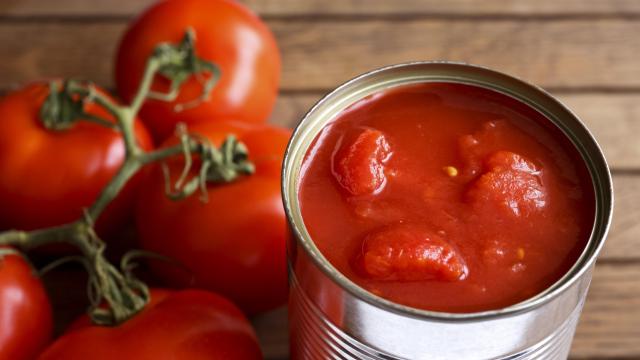The Western drought has come for pasta sauce and ketchup. Processing tomatoes, used in innumerable grocery store staples, are suffering from years of subpar rainfall and snowpack in California. The state, which has historically produced about one third of the processing tomato crop’s global supply, is slated to fall short of (already low) harvest projections on tomatoes and other foods, as first reported by Reuters.
With less tomato, onion, and garlic being successfully grown , shoppers should expect prices on the shelves to go up, the president of the California State Board of Food and Agriculture, Don Cameron, told Reuters. From the outlet:
“What you’re seeing harvested this summer, that really hasn’t even hit the grocery shelf, is a 25% increase in the cost of the product to the processors – the canners, the buyers downstream,” he said. “The onions and garlic have already been negotiated for 2023, with another 25% increase in price.”
Cameron said tomato prices face a similar hike, resulting in a 50% increase in cost to canners and processors from 2021 to 2023.
In August, the U.S. Department of Agriculture forecast that processing tomato production would be 2% below the previous year’s production and 10% below what had been projected in May, a few months before. Then, just a month later, the Processing Tomato Advisory Board estimated that growers would only be able to meet 82% of that already low target goal.
California and much of the West have entered the fourth year of an ongoing, historic drought that’s left the Colorado river at record low levels. As of writing, the entire state is in drought, and a large chunk of the Central Valley is under “Exceptional Drought.” August 2022 marked the driest three-year period in all of the Golden State’s recorded history. Previously, dry conditions have also affected sriracha and almond trees.
And climate change is almost certainly making things worse. Tomato yields in California and elsewhere could decline by about 6% due to climate change over the next 3 decades, according to a study published in June in the journal Nature. Current levels of human-caused warming made the West’s drought 20 times more likely than it would’ve been otherwise, according to a recently released report from World Weather Attribution.
Drought and the emerging crop challenges aren’t just the result of lack of rainfall, but also heatwaves, and thin snowpack resulting in less melt to feed the waterways. Plus, there’s the restrictions put into place to try to preserve the remaining water.
The Colorado river’s decline imperils drinking water supplies, agriculture, and also electricity production across the West — where hydroelectric accounts for more than one fifth of all energy, according to the National Hydropower Association. In order to prevent dams from losing their power capacity, reservoirs like Lake Powell and Lake Mead need to be maintained at certain levels, and less water is being released to states until more water falls from the sky.
Yet, when a short series of rainstorms finally did materialise at the end of September in CA’s Central Valley, it wasn’t all good news. The isolated rains, which weren’t enough to restore soil moisture, fell at the wrong time — causing outbreaks of mould on the near-ripened tomatoes, rendering the fruits unsellable, according to an article from the outlet Tomato News. “Processing tomato harvest resumed, but mould issues increased due to recent rain…Organic cherry tomato harvest neared completion due to damage from wet conditions,” confirmed the most recent USDA report on California’s crops.
